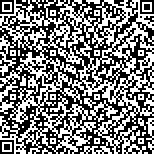| 引用本文: | 李金月, 谭运洪, 李海涛, 岩罕单, 龚燕雄, 肖云学, 郁文彬.基于分子与形态证据的傣药“傣百解”基原考证[J].广西植物,2023,43(1):32-42.[点击复制] |
| LI Jinyue, TAN Yunhong, LI Haitao, AI Handan,
GONG Yanxiong, XIAO Yunxue, YU Wenbin.Authentication on the Dai medicinal herb “Dai-Bai-Jie” using molecular and morphological data[J].Guihaia,2023,43(1):32-42.[点击复制] |
|
| |
|
|
| 本文已被:浏览 6325次 下载 1791次 |

码上扫一扫! |
|
|
| 基于分子与形态证据的傣药“傣百解”基原考证 |
|
李金月1,2, 谭运洪1,3, 李海涛4, 岩罕单5, 龚燕雄6, 肖云学7, 郁文彬1,3*
|
|
1. 中国科学院西双版纳热带植物园 综合保护中心, 云南 勐腊 666303;2. 中国科学院大学, 北京 100049;3. 中国科学院
东南亚生物多样性研究中心, 云南 勐腊 666303;4. 中国医学科学院、北京协和医学院药用植物研究所云南分所,
云南 景洪 666100;5. 西双版纳州傣医医院, 云南 景洪 666100;6.6. 云南省热带作物科学研究所,
云南 景洪 666100;7.7. 中国科学院西双版纳热带植物园 园林园艺部, 云南 勐腊 666303
|
|
| 摘要: |
| “傣百解”是傣医常用的一种解药,其基原植物最早记录是夹竹桃科苦绳(Dregea sinensis),后来被鉴定为夹竹桃科通光散(Marsdenia tenacissima)。为进一步澄清“傣百解”的基原植物,该研究结合形态与分子证据对“傣百解”基原植物及近缘种进行了整合分析。结果表明:(1)利用3个DNA片段(psbD-trnT、trnL-trnF、ITS)重建牛奶菜属(Marsdenia)及其他牛奶菜族物种的系统发育关系,其结果显示“傣百解”样品与通光散样品构成1个独立的单系分支,并与灵药牛奶菜(M. cavaleriei)构成姐妹类群。(2)结合形态性状与模式标本进行对比分析发现,“傣百解”基原植物与通光散模式标本基本一致,而其形态特征与姐妹种灵药牛奶菜存在明显差异。(3)进一步确定了“傣百解”的基原植物是通光散,其叶形态与花部性状差异可作为区分通光散和灵药牛奶菜的重要特征。该研究通过整合形态特征与分子证据完成了对“傣百解”的正本清源,该研究结果可用于市场药材的快速准确鉴定,为“傣百解”今后的开发与利用奠定了基础。 |
| 关键词: 傣百解, 基原植物, 分子系统学, 形态学, 考证 |
| DOI:10.11931/guihaia.gxzw202110070 |
| 分类号:Q941 |
| 文章编号:1000-3142(2023)01-0032-11 |
| 基金项目:中国科学院“西部之光”项目; 云南省重点研发计划项目(202103AC100003); 重大科技基础设施开放研究项目( 2017-LSF-GBOWS-02 ); 云南省万人计划“青年拔尖人才”项目。 |
|
| Authentication on the Dai medicinal herb “Dai-Bai-Jie” using molecular and morphological data |
|
LI Jinyue1,2, TAN Yunhong1,3, LI Haitao4, AI Handan5,
GONG Yanxiong6, XIAO Yunxue7, YU Wenbin1,3*
|
|
1. Center for Integrative Conservation, Xishuangbanna Tropical Botanical Garden, Chinese Academy of Sciences, Mengla 666303, Yunnan, China;2. University of Chinese Academy of Sciences, Beijing 100049, China;3. Southeast Asia Biodiversity Research Institute, Chinese Academy of Sciences,
Mengla 666303, Yunnan, China;4. Yunnan Branch of Institute of Medicinal Plant Development, Chinese Academy of Medical Sciences &5.Peking
Union Medical College, Jinghong 666100, Yunnan, China;6.5. Xishuangbanna Dai Medical Hospital, Jinghong 666100, Yunnan, China;7.6. Yunnan Institute of Tropical Crops, Jinghong 666100, Yunnan, China;8.7. Center for Gardening and Horticulture,
Xishuangbanna Tropical Botanical Garden, Chinese Academy of Sciences, Mengla 666303, Yunnan, China
1. Center for Integrative Conservation, Xishuangbanna Tropical Botanical Garden, Chinese Academy of Sciences, Mengla 666303, Yunnan, China;
2. University of Chinese Academy of Sciences, Beijing 100049, China; 3. Southeast Asia Biodiversity Research Institute, Chinese Academy of Sciences,
Mengla 666303, Yunnan, China; 4. Yunnan Branch of Institute of Medicinal Plant Development, Chinese Academy of Medical Sciences & Peking
Union Medical College, Jinghong 666100, Yunnan, China; 5. Xishuangbanna Dai Medical Hospital, Jinghong 666100, Yunnan, China;
6. Yunnan Institute of Tropical Crops, Jinghong 666100, Yunnan, China; 7. Center for Gardening and Horticulture,
Xishuangbanna Tropical Botanical Garden, Chinese Academy of Sciences, Mengla 666303, Yunnan, China
|
| Abstract: |
| As a traditional Dai medicine, “Dai-Bai-Jie” is a kind of antidote, and its source plant was firstly recorded as Dregea sinensis. Currently, the source plant has been corrected as Marsdenia tenacissima. In order to further clarify the source plants of “Dai-Bai-Jie”, we carried out an integrated analysis of the source plants of “Dai-Bai-Jie” and its related species in this study. Our key results were as follows:(1)Phylogenetic relationship of Marsdenia and other species of Marsdenieae using three DNA fragments(psbD-trnT, trnL-trnF, ITS)showed that all “Dai-Bai-Jie” samples were supported as monophyletic with the sample of M. tenacissima, and were sister to M. cavaleriei.(2)Comparative analyses of morphological characters with type specimen proved that morphological characters of the “Dai-Bai-Jie” samples were consistent with those of the type specimen of M. tenacissima and obviously different from those of M. cavaleriei. In this study, the source plant of “Dai-Bai-Jie” was identified as the species M. tenacissima. Meanwhile, it was easy to discriminate from M. cavaleriei in the leaf and floral characters. According to both morphological and molecular evidence, it has been confirmed that the source plant of “Dai-Bai-Jie” is M. tenacissima that can be used for rapid and accurate authentication of medicinal herbs in the market, and also benefit for the development and utilization of the “Dai-bai-jie” medicine in future. |
| Key words: Dai-Bai-Jie, source plant, molecular phylogeny, morphology, authentication |
|
|
|
|
|